We have a friend, Tim B., who we’ve known for the better part of 25 or 30 years. Way back then, I hadn’t traveled a whole lot. In fact, circa the early-mid 1990s, I hadn’t even been on planes more than a dozen times in my life. But Tim? He could look up in the sky and tell you what airline a certain plane came from, and sometimes what type of plane it was. I was very impressed!
Joe’s another one. To this day, he can see a car on the street and know what make and model it is. And he’s not even really a “car guy.” He’s just learned from osmosis and innately “knows.”
I’ve taken a hint from Tim and Joe, and, not long ago, wrote about how to tell the difference between an Airbus and Boeing. It’s great at parties! So now, let’s look to make you a superstar at those parties, and know all about plane lights…
If you’ve been inside a plane, you’re probably familiar with the different lights you may see. Ambient lighting. The non-smoking light. The seat belt light. The light so you can read your book. The light that goes on after you ring for the flight attendant. You’ll only see them in the event of an emergency, but the lights on the floor that will help lead you to the emergency exit.
There are a bunch of lights on the outside of a plane, too. Just like the lights inside the plane, many are different from each other, and each has a different reason for being there. Some can be seen from the ground, some only at the airport. Some are white, some are other colors. Some blink, some are steady. Some are so pilots can see, others are so they can be seen.
Lights So Pilots & Others Can See Better
A. Taxi Lights
A taxi light is a bright white lamp that’s located on the nose landing gear strut of most planes (some planes, such as the Boeing 757 and 767 have 2 taxi lights). This light is typically turned on whenever the aircraft is in motion on the ground, and that gives the pilot greater visibility during taxi, takeoff, and landing. So they’re similar to a car’s headlights.
B. Runway Turnoff Lights
These are usually located on each wing, just where they attach to the plane itself. They’re bright white lamps and are intended to provide side and forward lighting during taxiing and when turning off the runway. The lights can also be used in flight if greater visibility is required.
C. Landing Lights
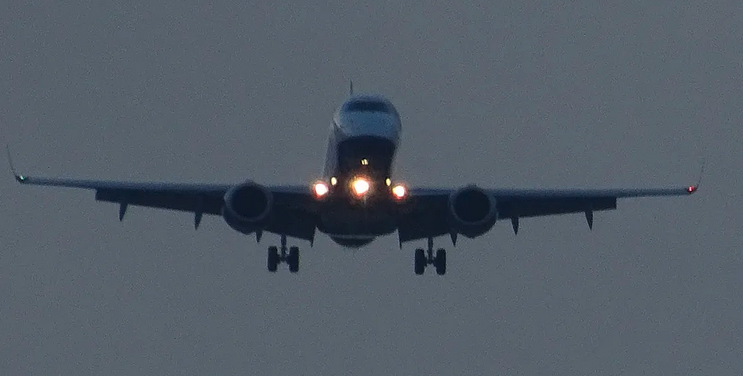
PC: Rawpixel
Landing lights are high-intensity lights (typically the brightest light on the plane) that are used to illuminate the runway during takeoff and landing. They also ensure that the plane can be seen by other pilots. These lights may be mounted on the wing, landing gear strut or fuselage and are always on during flights.
D. Wing Inspection Lights
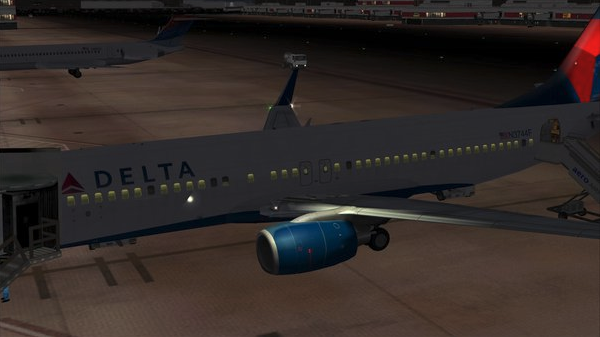
PC: W. Simmons / Quora
Wing inspection lights are also known as ice inspection lights or wing scan lights. It allows pilots and maintenance people the light they need to check for ice formation on the wing, as well as other potential hazards such as damage to the wing.
Wing inspection lights can be found on the side of the plane, right in front of where the wing and plane attach.
E. Wheel Well Lights
Some planes are equipped with additional lights in the nose and main gear wheel wells. These lights are provided primarily to assist ground personnel in making pre-flight inspections of a plane at night.
Lights So Others Can See The Plane
A. Navigation Lights
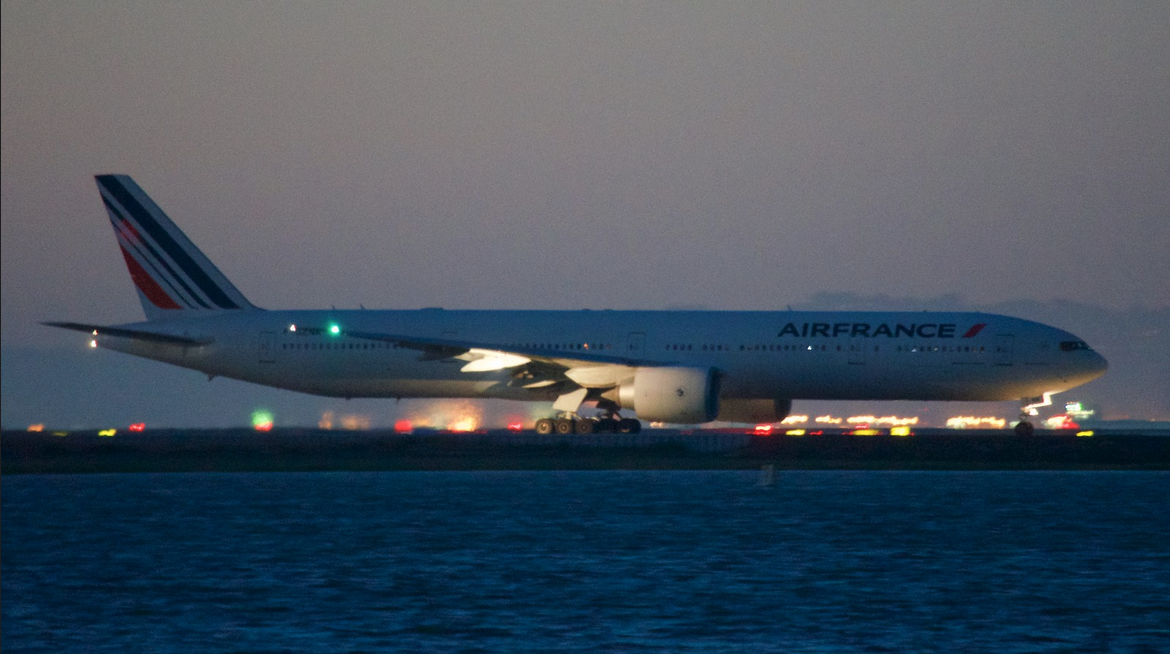
PC: Bill Abbott / flickr
Also known as Wingtip Position Lights (or just Position Lights), there are steady, non-blinking lights you find, duh, on a plane’s wingtip. A green one (as seen in the photo above) will always be on the right wing, and a red one on the left. They’re there to illuminate the airplane during flight at night, so other pilots and air traffic controllers can see it more easily. This decreases the chance of an in-air collision.
The design of these lights came about because it’s the same configuration used in boats. Back in the 19th century, mariners discovered that adding red and green flashing lights to their boats lowered the risk of collisions – it’s been a legal requirement for shipping in the US since the early 1800s. Aviation experts then adopted the same configuration for planes.
Fun fact! Of all the colors on the spectrum that humans can see (remember, ROY G. BV?), red and green are two of the most distinguishable to the human eye. The human eye is most sensitive to green than any other color. On top of that, red works as an excellent contrast with the colors of both the ocean and the sky. So…green and red!
There are also rear-facing Navigation Lights on the wingtips and the tail of the plane. Those are white and blink on and off.
If a pilot sees another plane and can see its red and green navigation light, they know the other plane is flying towards them. If they see the white lights, they know the other plane is flying away from them.
B. Anti-Collision Light
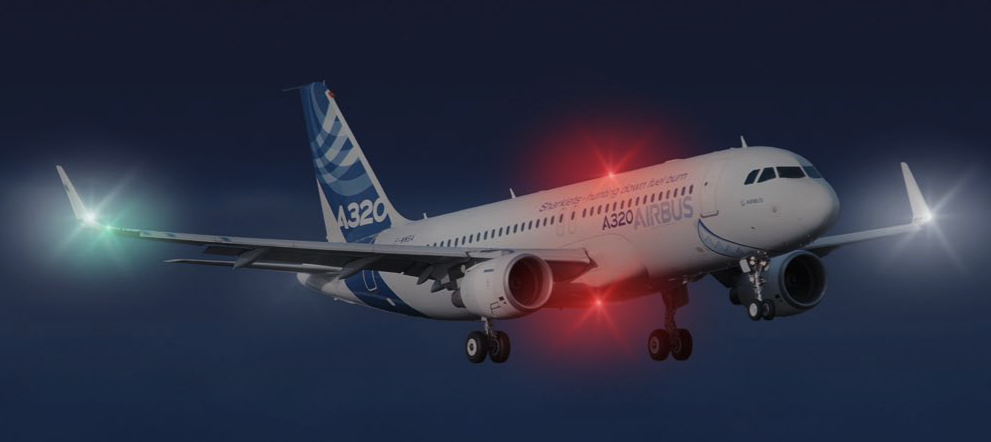
PC: Collins Aerospace
Red Anti-Collision Lights: These are lights that can be found at the top and the bottom of a plane. They’re red and they flash – the perfect way to be seen! They also act as a signal to the ground staff that the plane’s engines are active.
White Anti-Collision Lights: These lights are installed on the plane’s wingtips. Like the red anti-collision lights, they’re bright and they strobe, to catch attention and therefore avoid a collision.
You can easily see both of these types of anti-collision lights when watching a plane fly overhead.
C. Alternating Landing Light System
(for the above, start watching at 0:12)
Also known as ALLS or a Pulselight System, these are lights on the bottom of the plane and the base of the wing, that pulse, alternating left and right.
This system is supposed to enhance visibility on the theory that a flashing light may attract attention earlier than a steady light. It may also help avoid birdstrikes, since the plane may get the birds’ attention sooner. Some airlines (Alaska, Qantas and Southwest, for example) use them, some don’t.
D. Logo Lights
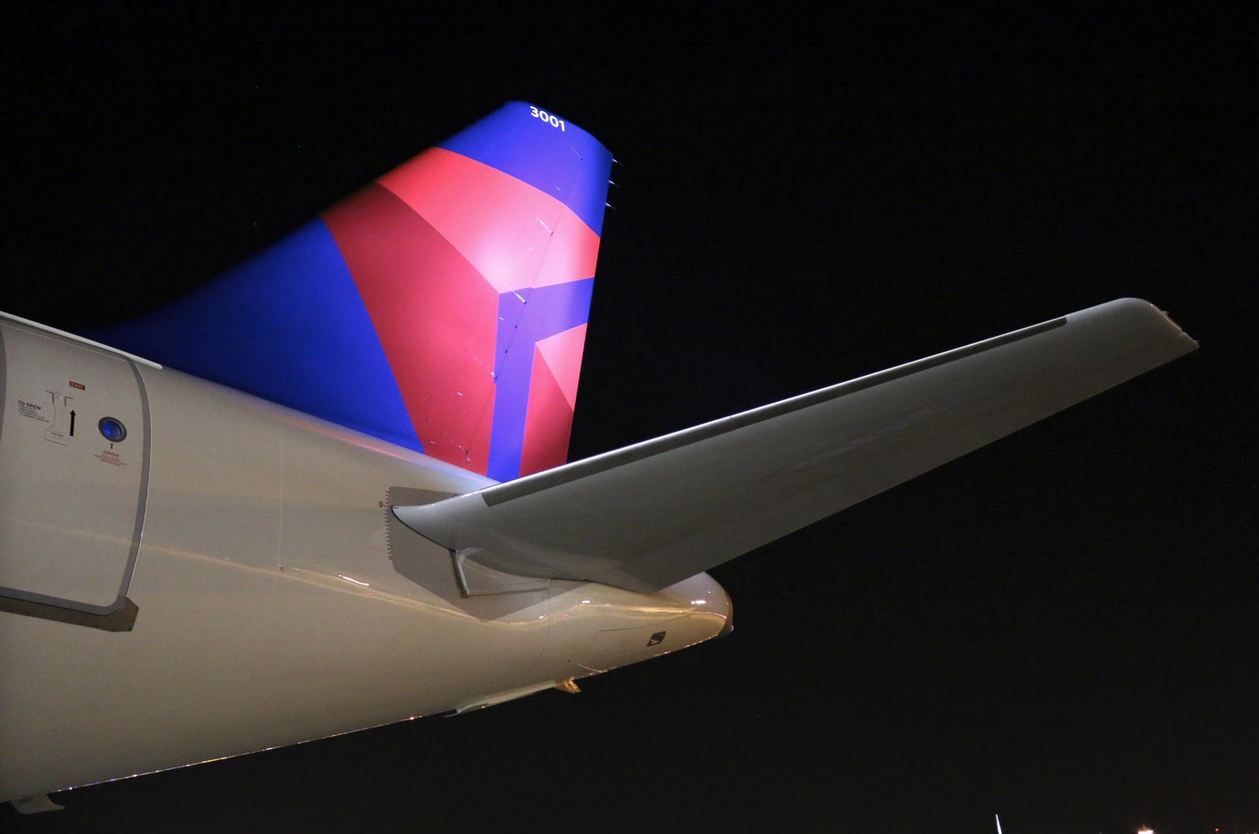
Remember my story about Tim, who could identify a plane by the logo? He could even do that at night, thanks to logo lights. 😉
This photo shows all of the lights and where to find them. Image from staticflickr:
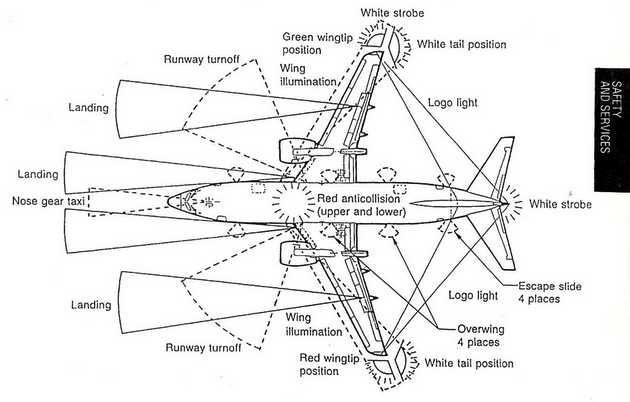
H/T: AeroSavvy, Collins Aerospace, Monroeaerospace, Pulselite, Simple Flying, StackExchange
Feature Photo: Spaceaero2 / Wikimedia
Want to comment on this post? Great! Read this first to help ensure it gets approved.
Want to sponsor a post, write something for Your Mileage May Vary or put ads on our site? Click here for more info.
Like this post? Please share it! We have plenty more just like it and would love it if you decided to hang around and sign up to get emailed notifications of when we post.
Whether you’ve read our articles before or this is the first time you’re stopping by, we’re really glad you’re here and hope you come back to visit again!
This post first appeared on Your Mileage May Vary

1 comment
“Red to Red – Green to Green”. For navigation lights because they are at set sides (port or starboard aka left and right) when two vessels are approaching as long as the navigators both hold to this rule they will pass each other without colliding.